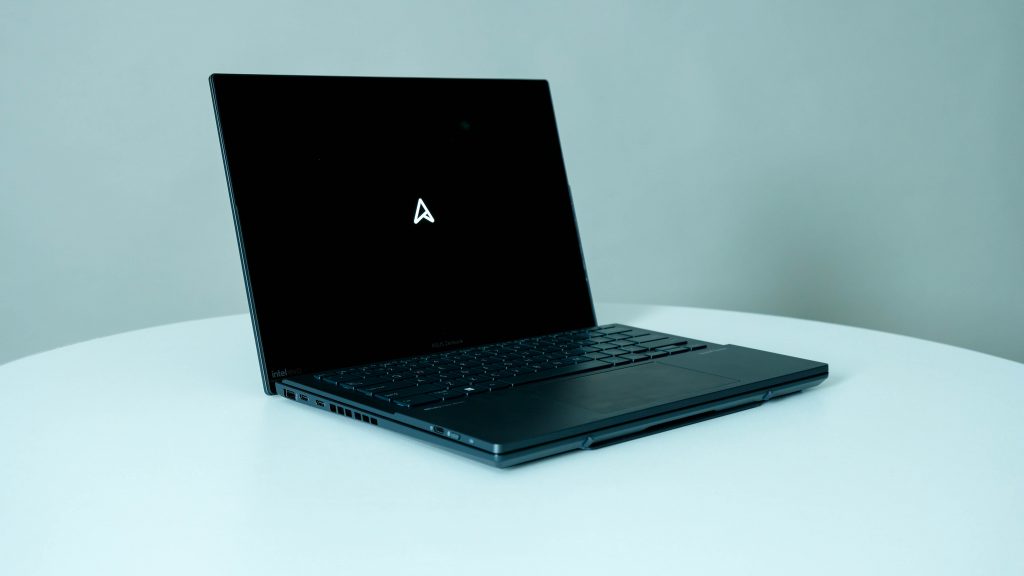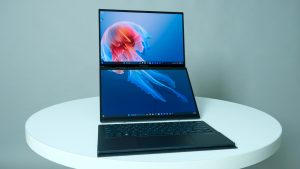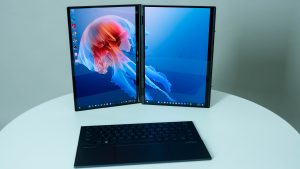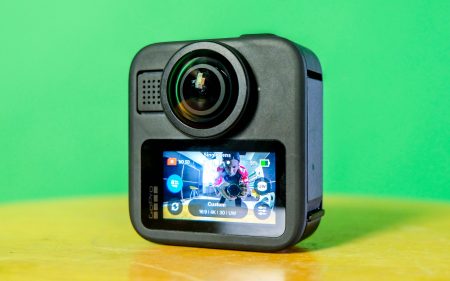The Asus Zenbook Duo 2024 is Asus's best attempt at a dual-screen device to date. With its two 14 inch touch screens and its Intel Core Ultra 9 185H CPU, it does everything it can to maximise productivity with its two screens. The major hurdle is the device's price tag since two screens are also more expensive than one.
-
Design
-
Functionality
-
Features
-
Battery
-
Value
With the prevalence of dual screen folding smartphones, it is no surprise that laptops, the OG folding device, have come to the party. The Asus Zenbook Duo 2024 does everything it can to maximise productivity with its two screens. It’s certainly the manufacturer’s best attempt at a dual screen device to date.
It gives you multi-screen versatility with multiple screen orientations for its 14in OLED touch screens while packing in the latest Intel Core Ultra 9 185H processor to carry the load of those screens. Throw in built-in Copilot features and the Asus pen 2.0 and there is virtually nothing the notebook can’t do. The only deterrent from acquiring this device is its price, but there’s a strong argument for it being worth every cent.
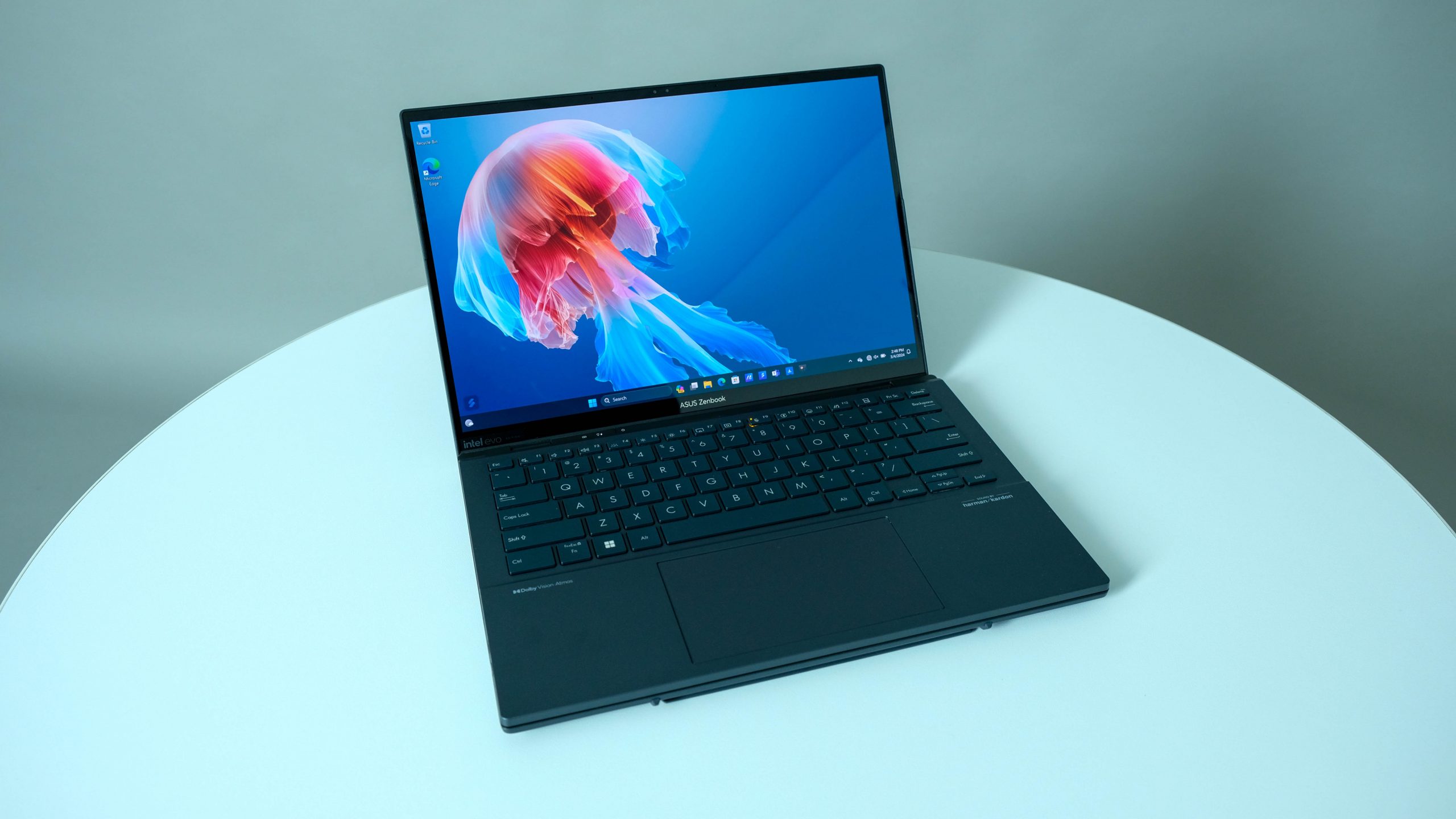
Thick around the edges
The Asus Zenbook Duo is on the thicker end of 14-inch laptops with its 1.99mm edge, but it’s not cumbersome. The 1.65 kg weight is certainly lighter than we’re used to since we’re accustomed to Asus’s TUF gaming range. Much like with the Asus Zenbook 17 Fold, it’s impossible to make a portable keyboard disappear completely. However, it is inconspicuous enough if you’re coming from other 14in laptops.
To the untrained eye, the Zenbook Duo could pass for a normal laptop, making the transition from one much easier. The device remains in Laptop mode until you lift the keyboard from the second screen, following which you can choose how you use it. Of the three available modes we found ourselves using the horizontal dual screen the most. The built-in stand’s sturdy hinges made it the obvious choice. It opened up to 90 degrees but is strong enough to stand at more acute angles for a more vertical orientation. The screens open up to 180 degrees which we would recommend opting for in Dual Screen mode.
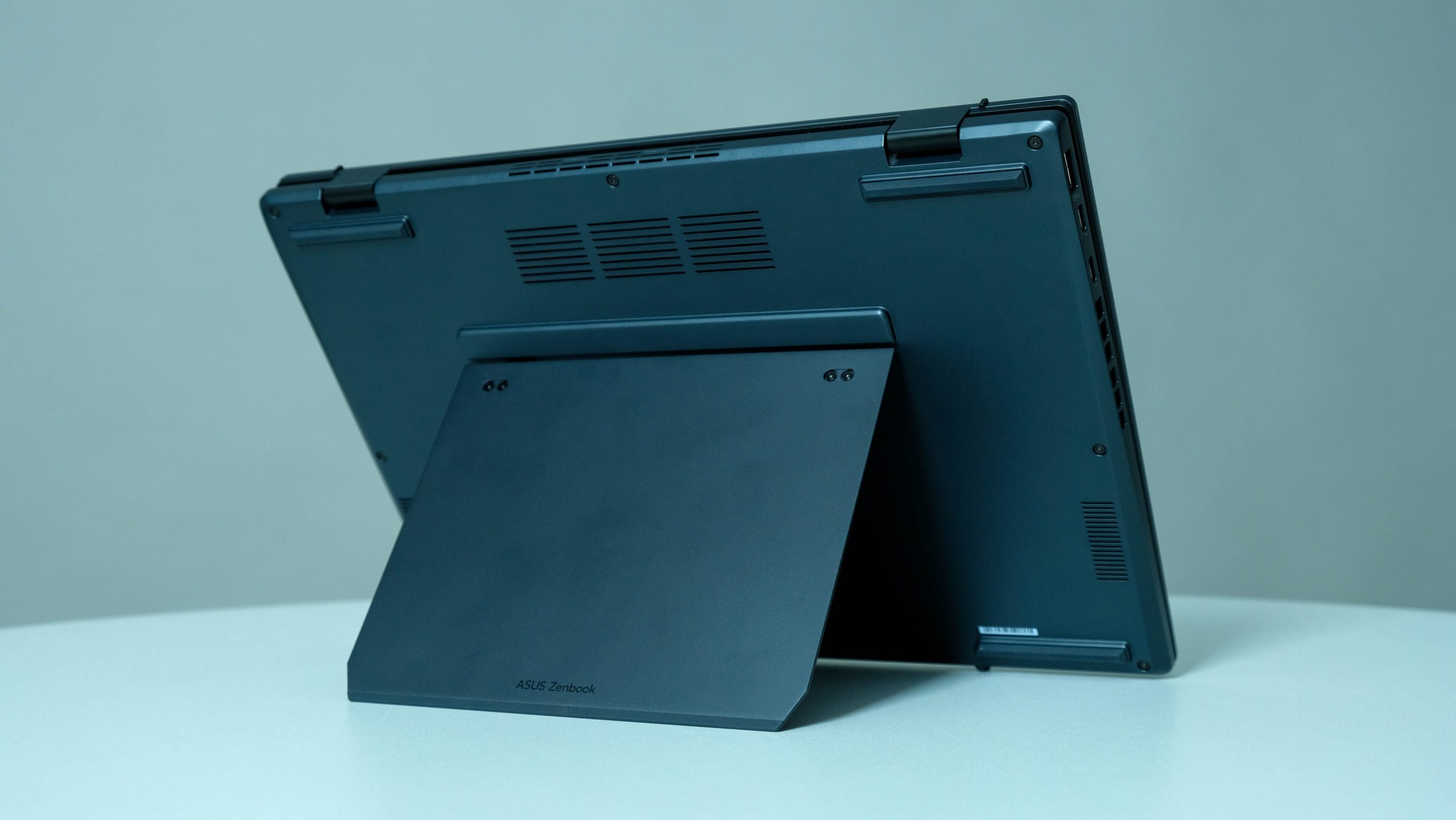
Sharing mode is more catered toward the Zenbook’s unfolding ability. In this mode, you can mirror your screen upside down for when you want to show someone sharing your screen with someone sitting across from you. At this point we move towards the realm of dual tablets, thanks to its touch screen capabilities. The function is intuitive and there are some scenarios, like sharing in a group, where that may be useful. We would just be more inclined to other alternatives in those scenarios. You can also extend your screen to be a single surface. We think two separate tablets are better than one twice as big but that’s just us.
Desktop mode keeps two scenes next to one another in portrait orientation. While it did provide a good orientation for having two written documents next to one another, it had its limitations. Using it on your desk not only removes access to the ports under the device and puts the remainder at an awkward angle. In trying to maximise its new found functionality, Asus got a little gimmicky.
Double screen, double the workload
Running two screens is anything but a walk in the park. You need a lot of processing power to maximise productivity. That’s why the Zenbook Duo is packing Intel’s latest flagship CPU, the Core Ultra 9 185H. The new addition to the Intel chip lineup is AI-ready and equipped with 16 cores. It also comes with 1 TB of SSD storage and 16GB RAM, without which running 2 screens would be virtually impossible.
The Zenbook Duo is no slouch when it comes to processing power, coped well with the performance tests we threw at it. When handling a typical office work load, it had no trouble switching between screens. This was backed up by the benchmark score that it received, performing slightly above average compared to devices with the same CPU.
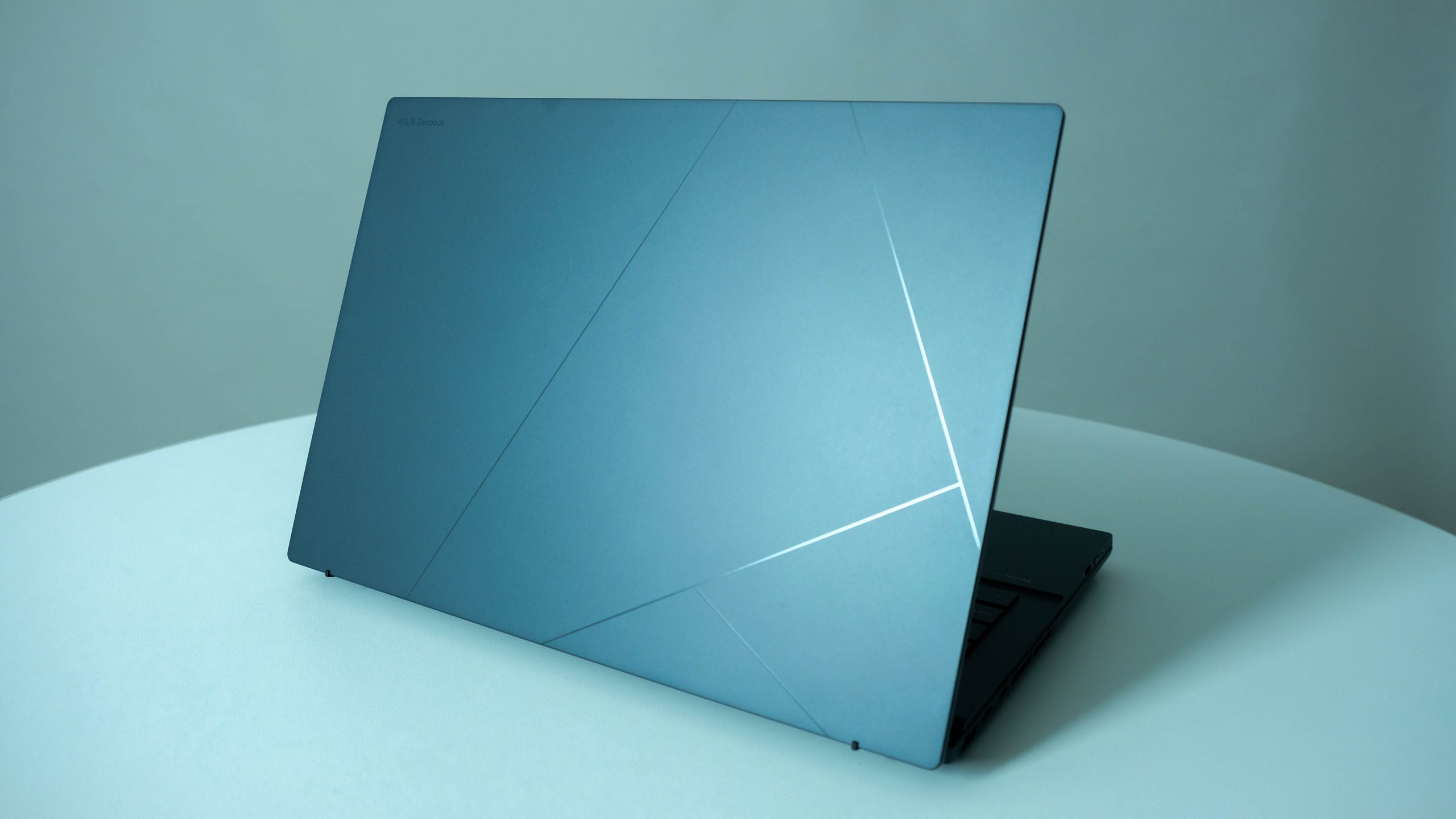
The Zenbook Duo also scored above average in the gaming benchmark we ran, so it holds its own with work and play. The notebook backed up its benchmark score with solid practical performance. It wasn’t all smooth sailing though, as we experienced a minor glitch in the display window when using Adobe Premiere Pro. Thankfully it didn’t affect our export and could probably be sorted out with some troubleshooting if we had more time with it. The second screen meant the heat increase was noticeable with heavier workloads, but with the ventilation out the back, it’s not too uncomfortable on one’s lap.
Add-ons and Power ups
We also had the Asus Pen 2.0 to use with the second screen. The pen’s function button made it easier to share handwritten notes since one click opens the Microsoft whiteboard. You can also set the button to take screenshots or move to the next slide in a presentation. The second iteration of the Asus pen comes with USB-C charging and multiple pen tips that made us wish we could draw better. This unlocks a whole new range of possibilities for designers.
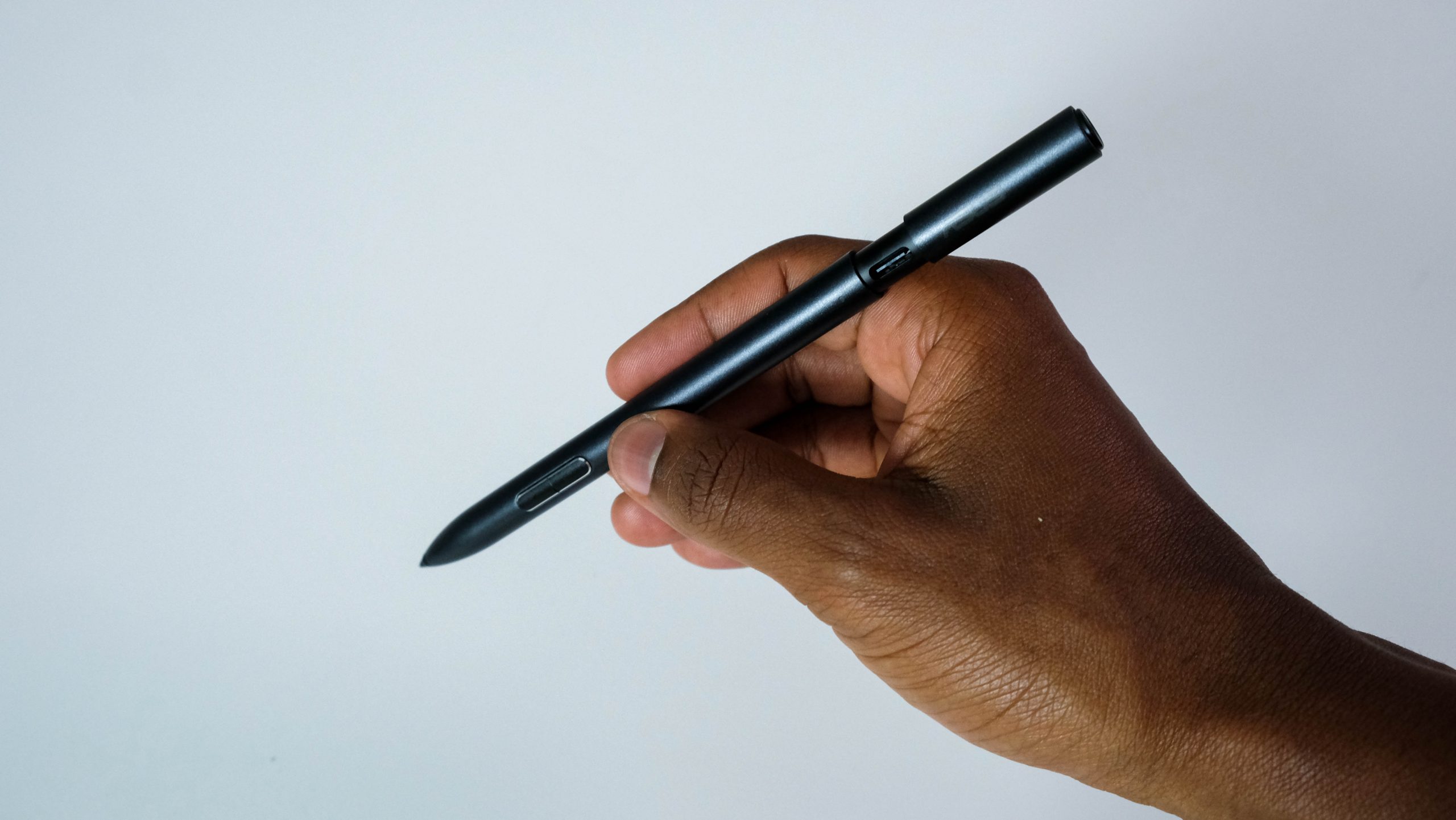
With screens being a large battery drainer, the included 75WH battery would last just under 4.5 hours under a heavy workload with both screens on. In single-screen mode with a basic workday’s load, it lasted about eight hours.
Not quite the 10.5 and 13.5 hours we were promised, but it makes up for it with its fast charging. When charging while using it, we were able to get from 20% to 100% in 2.5 hours. You charge through one of its two Thunderbolt four USB-C ports. These are accompanied by one USB 3.2 Gen 1 Type-A port on the left. On the right, there’s a 3.5 mm audio jack and an HDMI port.
Asus Zenbook Duo verdict
The Asus Zenbook Duo undeniably pushes the frontier of productivity and versatility with its dual 14-inch touch screens. It’s difficult to envision a situation where two screens are less productive than one. It’s even more difficult to see a context where you would be averse to having the device. Whether you’re in the office, the drawing studio, or your casual gaming chair, you won’t be disappointed by functionality or performance. It’s Asus’s best dual-screen device yet but the price it pays for pushing frontiers is new features that might not take off. The price you’re actually paying is R43 000 — this becomes easier to bear when you consider the Zenbook Duo’s versatility.

